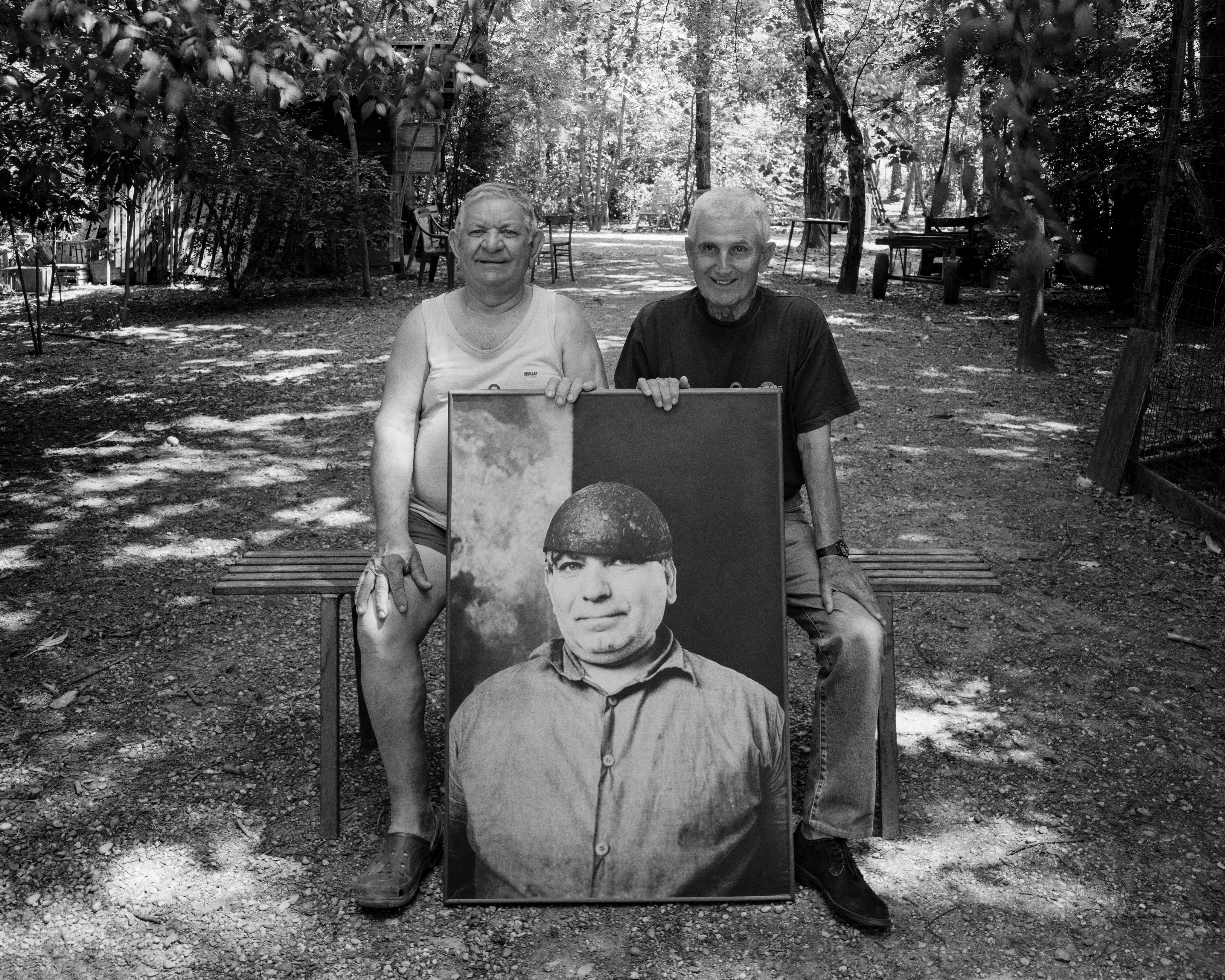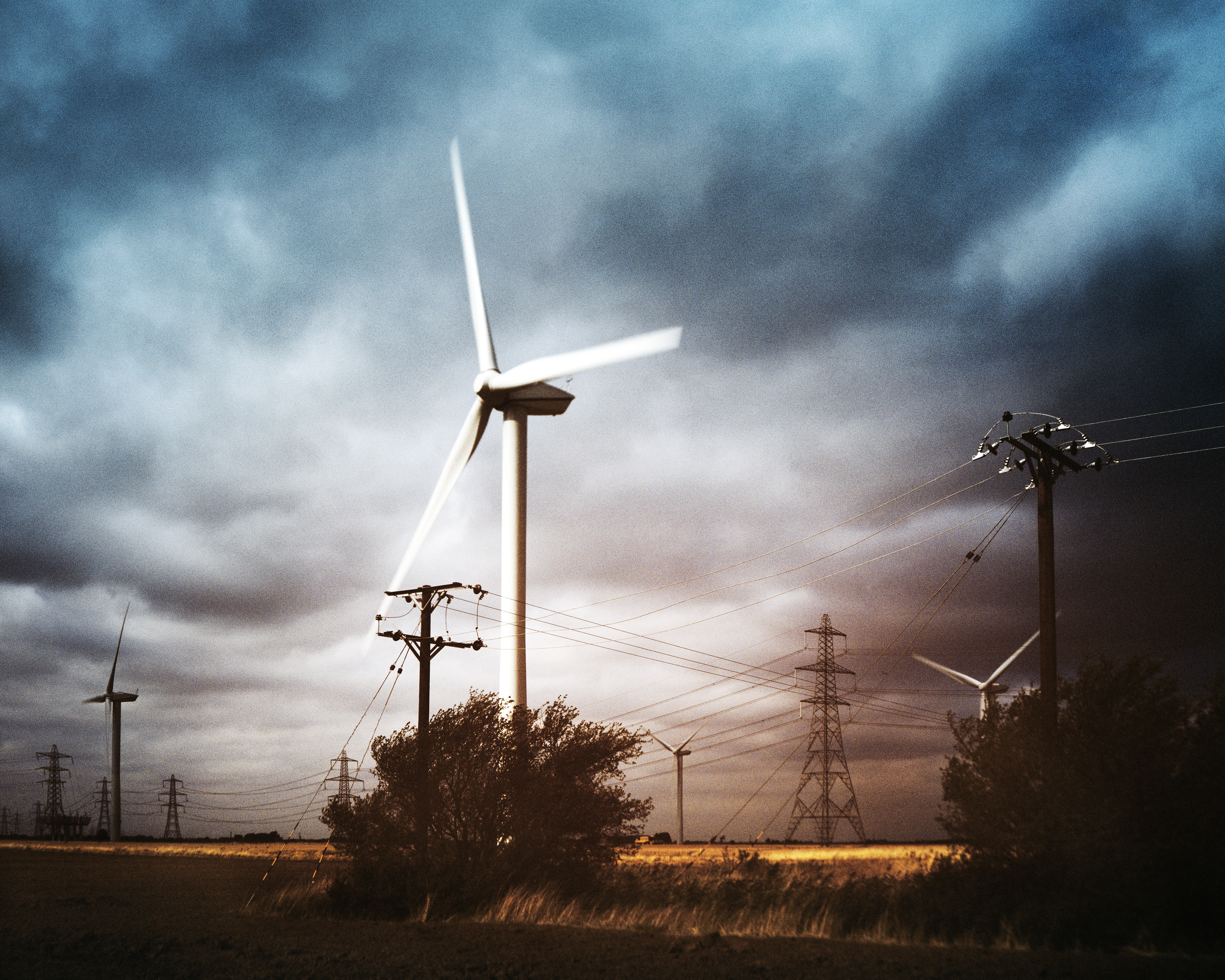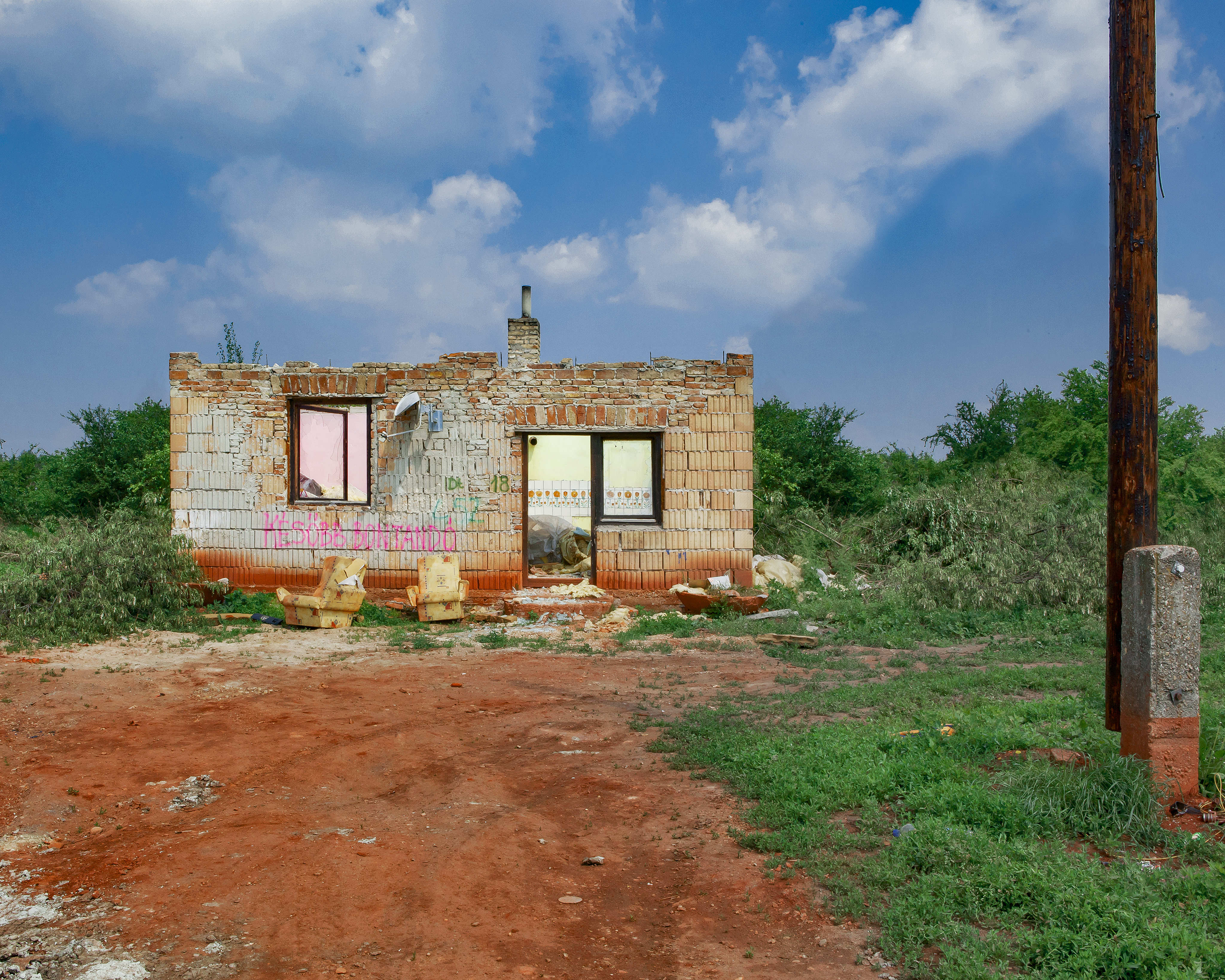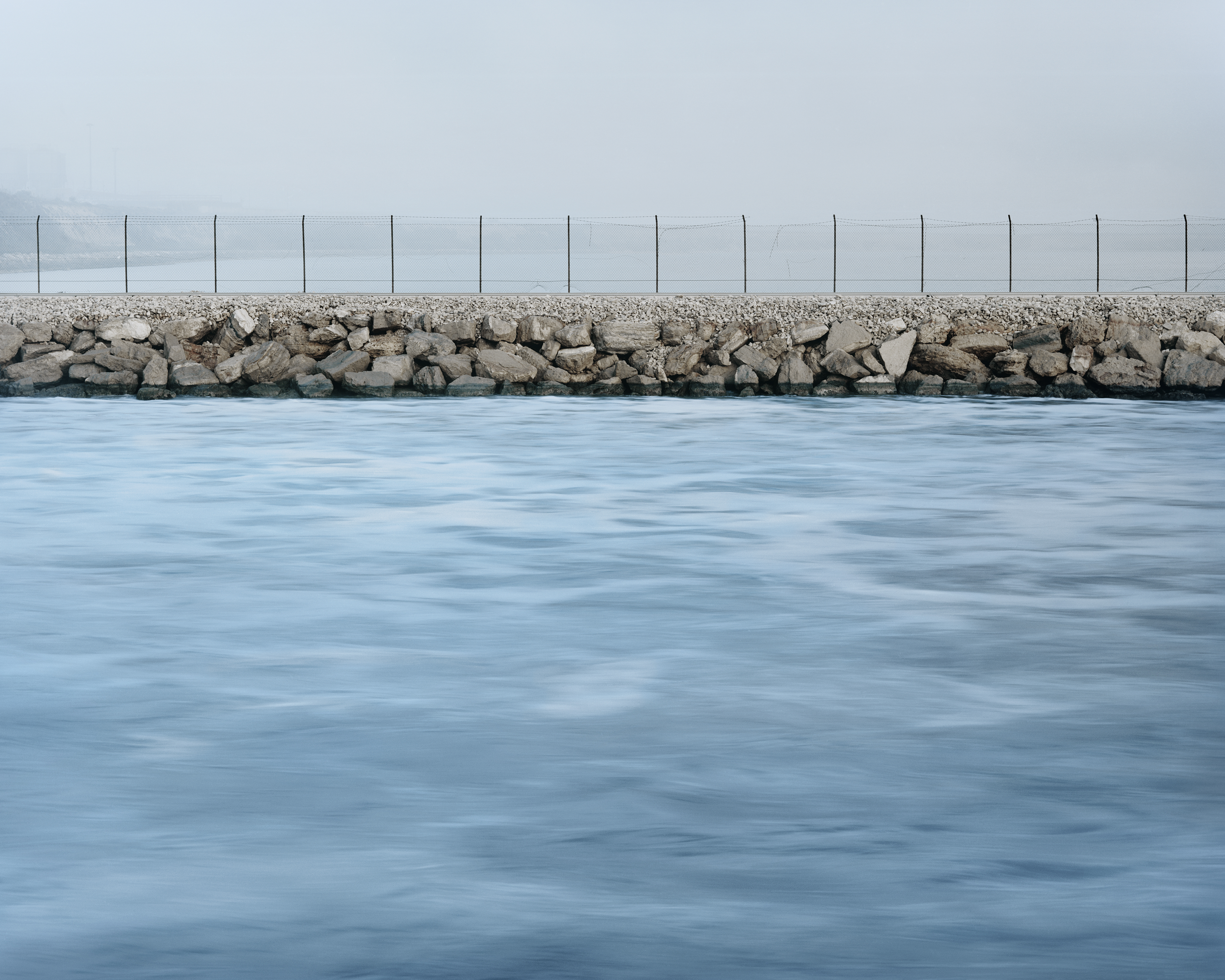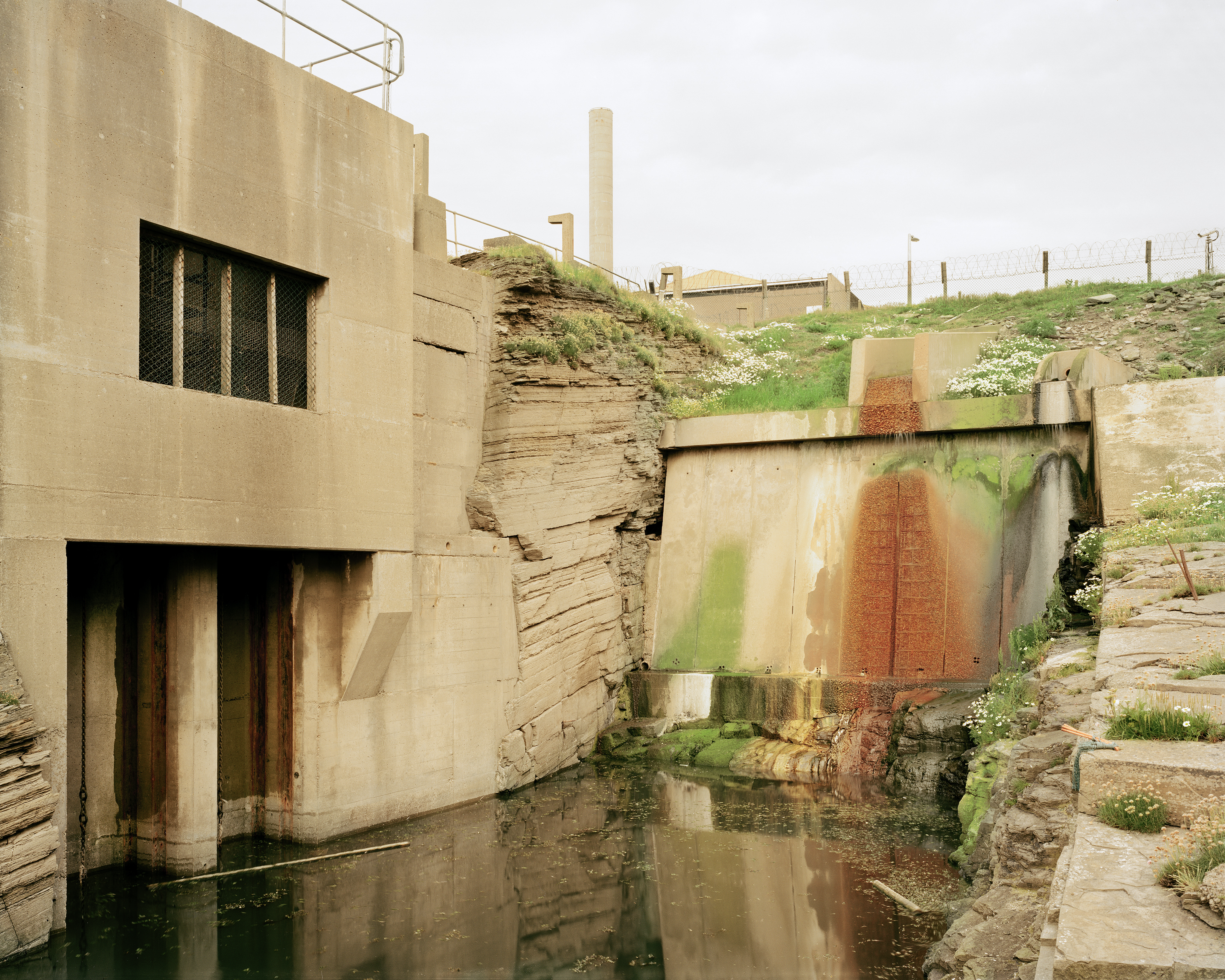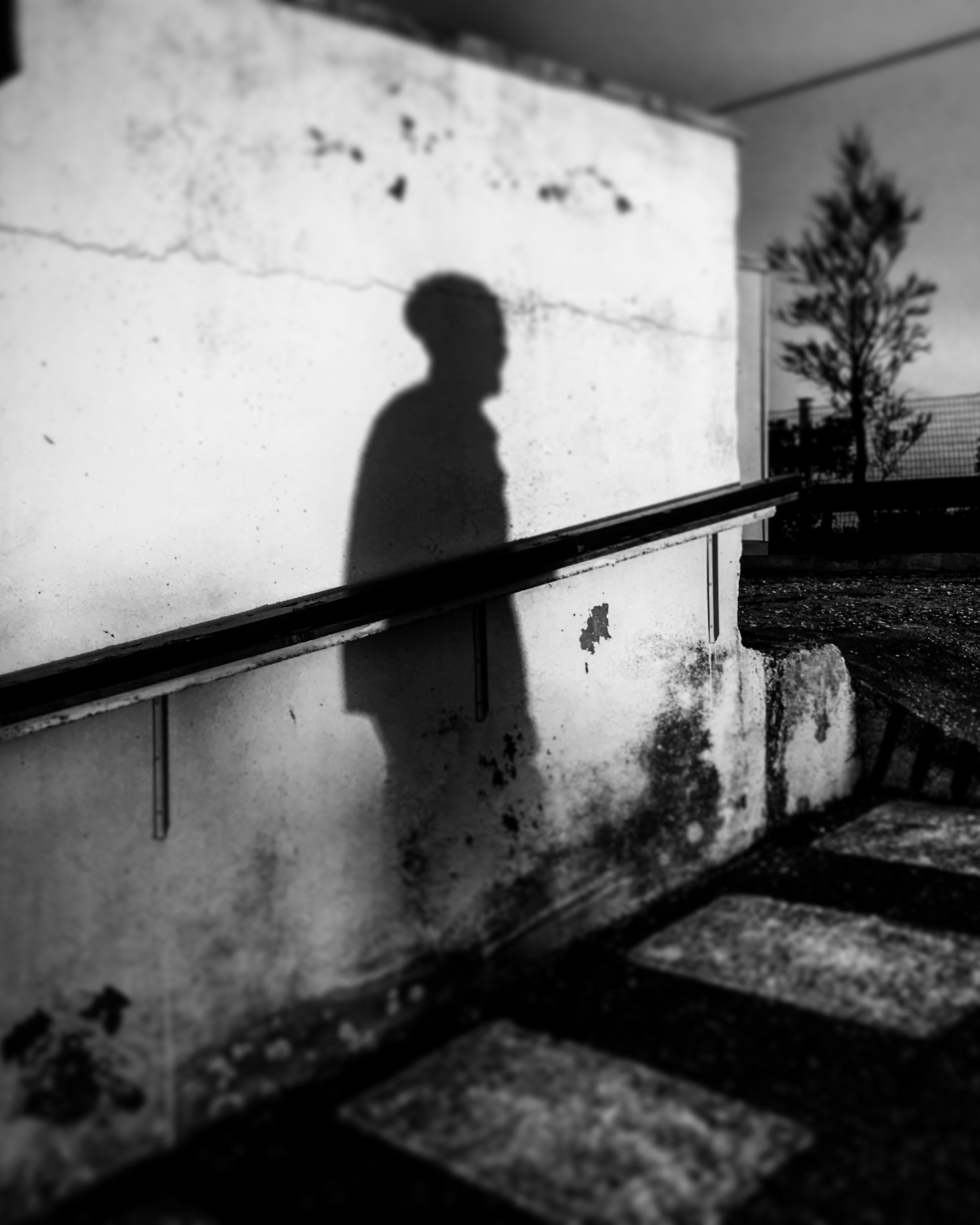
Conohar Scott is a lecturer in photographic theory and a practicing artist, who currently lives in England. For many years his professional practice has involved working in KE partnerships with environmental campaign groups and NGOs in a bid to raise awareness of the long-term health impacts of heavy metal pollution, and to campaign for environmental justice in polluted zones.
His work has been featured in the Photographies Journal (2023); in “Abyss”, a volume by the Dark Mountain Project (2021); and in the German magazine Melodie Und Rhythmus (2020). Awards for his professional practice include: ‘Gaia Artist in Residency’ at the Collection Museum, Lincoln (2021); exhibiting artist at Rotterdam Photo Festival (2020); and winner of the ‘Europa’ European PhotoAwards (2019) which was judged by the Martin Parr Foundation.
As an author, Routledge published his first monograph ‘Photography and Environmental Activism: Visualising Industrial Pollution’ (2022), which has been warmly received by critics internationally. This publication maps out key moments in the history of environmentalist photography, while also examining contemporary examples of artistic practice within a theoretical context. Furthermore, he is also a regular contributor to various online publications, where he writes about visual culture and environmental issues.
In addition to his various outputs as a researcher, Conohar has a track record of advocating for climate justice within higher education institutions.
His work has been featured in the Photographies Journal (2023); in “Abyss”, a volume by the Dark Mountain Project (2021); and in the German magazine Melodie Und Rhythmus (2020). Awards for his professional practice include: ‘Gaia Artist in Residency’ at the Collection Museum, Lincoln (2021); exhibiting artist at Rotterdam Photo Festival (2020); and winner of the ‘Europa’ European PhotoAwards (2019) which was judged by the Martin Parr Foundation.
As an author, Routledge published his first monograph ‘Photography and Environmental Activism: Visualising Industrial Pollution’ (2022), which has been warmly received by critics internationally. This publication maps out key moments in the history of environmentalist photography, while also examining contemporary examples of artistic practice within a theoretical context. Furthermore, he is also a regular contributor to various online publications, where he writes about visual culture and environmental issues.
In addition to his various outputs as a researcher, Conohar has a track record of advocating for climate justice within higher education institutions.
Criticism

Photography and Environmental Activism: Visualising the Struggle Against Industrial Pollution (2022) by Conohar Scott.
Routledge, UK. ISBN 9781138845770.
Historically, photography has acted as a technology for documenting the industrial transformation of the world around us; usually to benefit the interests of capitalist markets. An alternative photographic tradition exists, however, in which the indexical image is used "evidentially" to protest against incidents of industrial pollution. By providing a definition of environmental activism in photographic praxis, and identifying influential practitioners, this publication demonstrates that photography plays a vital role in the struggle against environmental despoliation.
This book will be of interest to scholars in photography, art and visual culture, environmental humanities, and the history of photography. Featuring photographs contributed from Guilio di Sturco (who also provides the cover image), Sean Gallagher, Rasel Chowdhury, Traces of Nitrate, Sophie Gerrard, Pieter Hugo, Chris Jordan, Mandy barker, Andy Hughes, Ana Maria Guerra, Peter Kennard, Sant Kalsa, Edward Burtynsky, Jamey Stillings, Mark Neville, David T Hanson, Kate Orff, Toby Smith, and many others.
Reviews
Noemi Quagliati (2023) Photography and Environmental Activism: Visualising the Struggle Against Industrial Pollution, Visual Resources, 37:3.
DOI: 10.1080/01973762.2023.2279809
Siobhan Angus (2023) Photography and Environmental Activism: Visualising the Struggle Against Industrial Pollution, Photography and Culture, 16:1, 89-92.
DOI: 10.1080/17514517.2023.2228082
Erik Palmer (2023) Photography and Environmental Activism: Visualising the Struggle Against Industrial Pollution by Conohar Scott, Visual Communication Quarterly, 30:1, 57-58.
DOI: 10.1080/15551393.2023.2165389
Recent Articles
Book Review: Forgotten Seas Tanja Engelberts (Autumn, 2023)
Source Magazine, # 112, pp76-77.
Tanja Engleberts’ photobook ‘Forgotten Seas’ provides a valuable insight into the offshore oil and gas industry of the North Sea, which has been a mainstay of energy production for countries such as the Netherlands, UK, Norway, Denmark, and Germany, for over half a century. Published by The Eriskay Connection (NL), the Dutch artist’s offering is a large paperback volume of approximately 200-pages. The result of six years intensive research in archives, and the product of numerous voyages across the North Sea to photograph oil rigs, Engleberts’ monograph is essential reading for anyone interested in the intersections that lie between industrial maritime architecture and the ethical concerns of environmental photography.
La Vetta e L’Abisso: Carrara (August, 2023)
Photographies, 16 (3). pp. 414-431. ISSN 1754-0763.
La Vetta e L’Abisso is a sequence of photographs which address the problems associated with over-mining in the famous white marble mines of Carrara, Tuscany. As a visual essay, the series attempts to undercut contemporary notions of the sublime in the documentation of mineral extractivism, which has been dominant in recent years due to the popularity of photographers such as Edward Burtynsky. Furthermore, the title of the essay, and the display of the monochrome large format photographs with the addition of a gold-selenium tone, alludes to eco-Marxist notions of commodity fetishism and social alienation, which underpin the exploitative logic of capitalist (re-)production. Drawing on the authors previously published critical commentaries on the qualities of photography and environmental activism, this essay proposes an approach to praxis which undercuts the distant passivity of the sublime in favour of encountering the negative effects of extractivism first-hand.
John A. Todd: Photographing Mining Pollution in Gold Rush California (June, 2023).
Youtube: Lecture for California Historical Society.
John A. Todd’s photographs document the destructive effects of hydraulic mining in California during the Gold Rush, which ultimately led to the mining technique becoming outlawed [1884]. In this talk, Dr. Conohar Scott and Michelle Bogre argue that Todd’s photographs represent a prototype for the relationship that continues to exist between environmental activism and photography in which corporate polluters are held to account by the evidential power of the image.
Source Magazine, # 112, pp76-77.
Tanja Engleberts’ photobook ‘Forgotten Seas’ provides a valuable insight into the offshore oil and gas industry of the North Sea, which has been a mainstay of energy production for countries such as the Netherlands, UK, Norway, Denmark, and Germany, for over half a century. Published by The Eriskay Connection (NL), the Dutch artist’s offering is a large paperback volume of approximately 200-pages. The result of six years intensive research in archives, and the product of numerous voyages across the North Sea to photograph oil rigs, Engleberts’ monograph is essential reading for anyone interested in the intersections that lie between industrial maritime architecture and the ethical concerns of environmental photography.
La Vetta e L’Abisso: Carrara (August, 2023)
Photographies, 16 (3). pp. 414-431. ISSN 1754-0763.
La Vetta e L’Abisso is a sequence of photographs which address the problems associated with over-mining in the famous white marble mines of Carrara, Tuscany. As a visual essay, the series attempts to undercut contemporary notions of the sublime in the documentation of mineral extractivism, which has been dominant in recent years due to the popularity of photographers such as Edward Burtynsky. Furthermore, the title of the essay, and the display of the monochrome large format photographs with the addition of a gold-selenium tone, alludes to eco-Marxist notions of commodity fetishism and social alienation, which underpin the exploitative logic of capitalist (re-)production. Drawing on the authors previously published critical commentaries on the qualities of photography and environmental activism, this essay proposes an approach to praxis which undercuts the distant passivity of the sublime in favour of encountering the negative effects of extractivism first-hand.
John A. Todd: Photographing Mining Pollution in Gold Rush California (June, 2023).
Youtube: Lecture for California Historical Society.
John A. Todd’s photographs document the destructive effects of hydraulic mining in California during the Gold Rush, which ultimately led to the mining technique becoming outlawed [1884]. In this talk, Dr. Conohar Scott and Michelle Bogre argue that Todd’s photographs represent a prototype for the relationship that continues to exist between environmental activism and photography in which corporate polluters are held to account by the evidential power of the image.
Gideon Mendel Fire/Flood (February, 2023)
1000 Words Magazine.
Conohar Scott posits that Gideon Mendel’s outdoor exhibition at the Soho Photography Quarter provides a much-needed counterpoint to the iridescent spectacle of the solitary iceberg, which, upon further observation, is divorced from the broader socio-ecological context of climate change.
The eco-anarchist potential of environmental photography: Richard Misrach’s & Kate Orff’s Petrochemical America (2020)
The Routledge Companion to Photography Theory. Routledge, UK. ISBN 9781138845770.
Taking Richard Misrach’s & Kate Orff’s publication Petrochemical America (2012) as a starting point for a range of debates, this paper argues that environmental photography has a crucial role to play in bringing about an awareness of environmental ethics, which can aid activists and autonomous groups such as citizen scientists in their struggle against industrial pollution. Key to this debate is the definition of the term environmental photography as a multimodal and collaborative genre of cultural production, which promotes the political values of eco-anarchist theories such as social ecology, through the medium of aesthetics.
Photographing mining pollution in gold rush California (April, 2017).
Photographies, 10 (2). pp. 189-209. ISSN 1754-0763.
This paper draws comparison between three photographers who documented the North Bloomfield Mining Co.’s (1866-1899) hydraulic gold mine, in California. The history of the North Bloomfield Mining Co. is of interest because of the role that photography played in promoting the interests of corporate capitalism, and conversely acting as an evidential tool for farmers whose lands were flooded by polluted tailings emanating from the mine. The company twice commissioned Carleton Watkins to document their undertakings; however, this paper argues that the aesthetic of the ‘industrial sublime’ originating in Watkins’ photographs obfuscates an understanding of the ecological realities of mining. Alternatively, this paper presents two lesser-known photographers, J.A. Todd and ‘Clinch’, who adopt a counter-aesthetic approach to Watkins. Todd’s photographs from the Woodruff vs. North Bloomfield [1884] trial were presented as evidence in the first collective civil action in US legal history, which pitched the interests of farmers against the corporate mining industry.
Environmental Resistance is the name for a repository of polluted spaces, which has been devised by the artist Conohar Scott. Often working in collaboration with researchers in environmental science, computing, law, geography, linguistics, graphic design, and in partnership with environmental activist networks, the repository exists to raise awareness about incidents of industrial pollution, and to campaign for environmental justice.


